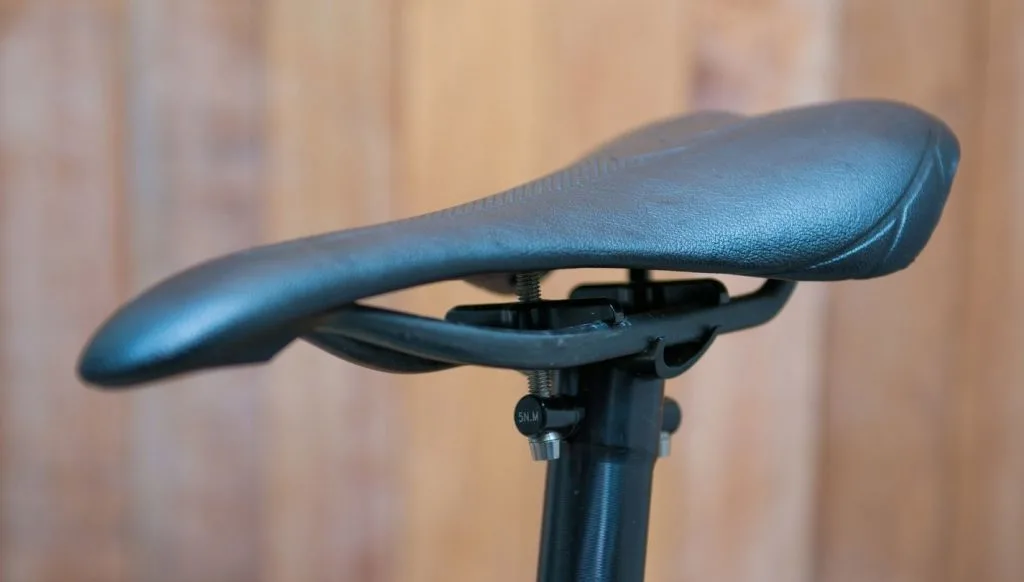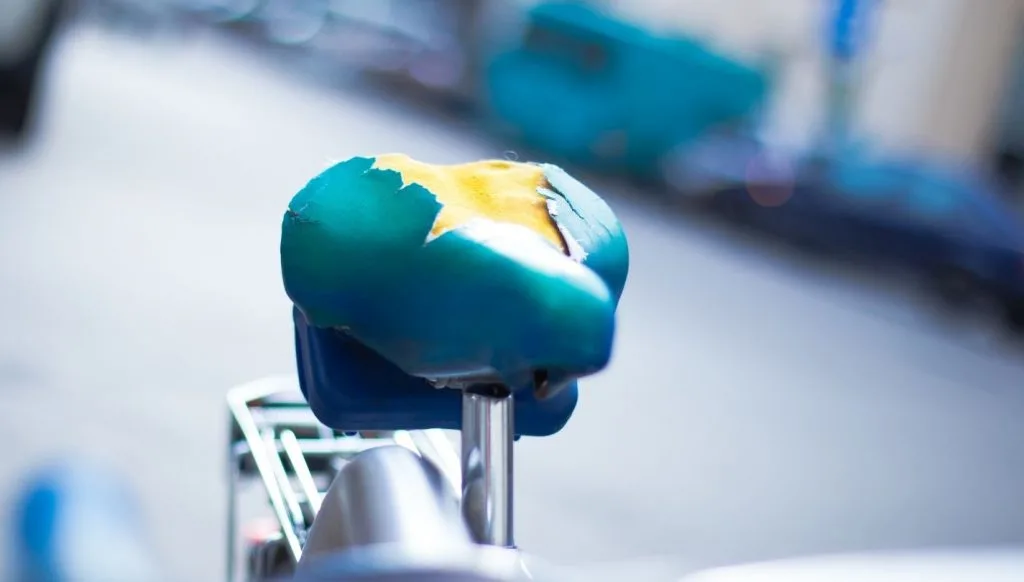
A bike saddle that suits not only your riding style but also your backside is an absolute necessity if you are considering setting out on a ride of any longer than an hour or so. A badly made saddle, or one that has been made using cheap, flimsy materials will, after a few grueling miles, make your rear-end feel like an entire football team has taken turns kicking it enthusiastically downfield!
Bicycle saddles don’t have to be expensively hand-made from exotic materials by talented craftsmen using techniques handed down through the centuries in order to provide a comfortable ride. But a poorly made saddle, with cheap component parts, is more than likely to provide some level of discomfort.
We have all heard the saying that “you get what you pay for”. This is especially true when it comes to equipment that will make your ride either a comfortable, pleasant experience or one in which you cannot wait for the end to hove in sight.
So do you have to fork out a small fortune to keep your backside happy? Well, yes… and no. Let us have a look at the question in more detail…
Why is a Saddle So Important?
Of all the parts fitted to your bike, your saddle is the one component most intimately connected to you. A correctly fitted saddle will make your bike feel like an extension of your body. A poorly chosen saddle will make you feel that you are perched on top of your bike like a bird on a twig.
Saddles, unlike, say, your derailleur, or your bottle cage are a very personal choice. Your riding style, your weight, the size of your pelvis, the extent of your personal “padding”, and indeed, the size and shape of your plumbing, will all make a huge impact when you are choosing your saddle. Get it wrong and you could be introducing your sensitive nether-regions to a whole world of pain!
What Makes a Saddle so Expensive?
A good saddle need not be an expensive saddle, although it should be acknowledged that, like our asses or wallets, come in a variety of different shapes, sizes, and thicknesses. A $400 saddle may be completely out of the question for many riders. And for some, it is a mere pocket change.
Generally speaking though, when discussing the saddle offerings from manufacturers with a decent reputation for providing a quality seat, it is the quality of the materials with which it is constructed that will make up the difference in the various pricing points.
Take fi’zi:k for example. fi’zi:k is keen to remind everyone that their saddles are not only made in Italy but also that they are hand-made in Italy. Their Arione style of saddle range anywhere from $100.00 to around $325.00.
fi’zi:k has this to say about the materials and construction of their Arione R3, a saddle that retails for around $175.00:
“The Arione R3’s Composite Glass co-injected Nylon shell provides the best support with optimized stiffness-to-weight construction – with Wing Flex technology which enables flexibility where the rider’s thighs meet the saddle – and an alloy Kium rail for lightweight.”
And their Arione R1, a saddle with exactly the same geometry but made with lighter, more durable and possibly more exotic materials, and which retails at around $235.00:
“Arione R1 features a composite carbon co-injected shell – with Wing Flex technology which enables flexibility where your thighs meet the saddle – and a Braided Carbon rail. It’s light, flexible, and agile, enabling you to perform at your optimum”.
So, pretty much the same saddle just made with different materials.
On the far side of the scale, you will have companies making saddles for that cyclist who wishes, above all else, to impress his riding buddies with the size of his bank balance and his elegant discernment of all things.

A wonderful example of these types of saddles from this type of manufacturer would be the wallet-busting offerings from Crown Saddles. Their Herzog Eberhardt model, for example, would set you back an eye-watering $1850.00. And that is United States Dollars, not Zimbabwean Dollars.
And while the Herzog Eberhardt weighs a mere 95 grams, being made as it is from fairy wings and glued together with a composite of swallow saliva and unicorn tears, we feel that the Crown Saddle company might just be playing in waters that are just a bit too deep for most cyclists’ swimming skills.
What Makes for a Bad Saddle?
You will notice that we did not say what makes for a cheap saddle. That is because the fit of the saddle is a more important than the price of the saddle.
Lighter, more durable materials may push the cost of a saddle into the stratosphere, but they may not make the saddle any more comfortable for the average weekend warrior. The few grams shaved from the weight of the seat by fitting carbon rails won’t make up for the lack in comfort if the fit isn’t right.
A “bad” saddle for your particular ass might be a perfect fit for another rider.
However, a poorly made saddle utilizing cheap materials and padding that will fall apart after a few rides would comfortably sit within the category of a bad saddle.
It’s also best to ignore the ‘bargain basement’ style saddles, as they won’t last or be comfortable regardless of how well they fit. It would be a better choice to look at the various price-point offerings from well-regarded manufacturers like these: (Your ass will thank you after a long ride)
- Syncross
- Selle Italia
- Specialized et al
How to Buy the Right Saddle
I highly recommend test driving a saddle before laying out the cash. The right saddle for you depends on your particular geometry.
You’ll need to think about:
- Whether you want a center cutout to protect your sensitive plumbing or whether that is not a concern for you.
- The shape of your buttocks
- The location of your sit bones
- Your riding position
- Whether you are a mountain biker or a roadie
- Whether you like your bike to be as lightweight as possible or not
- Whether you want real leather or synthetic
- And many other factors
If a saddle is not the right fit for you, then it is not worth enduring the pain in the hope that, like a pair of Red Wing boots, it will eventually be worn into the shape of your backside.
So in conclusion, as long as you go with a reputable brand, the most important factor to consider when buying a new saddle is how it fits your body, rather than the price tag.
There are many reasons that cyclists give not to go out and ride: Rain, cold, heat, time constraints, etc. These are all valid reasons to think twice about the ride. However, a saddle that punishes your backside every time you go out for a spin should not be part of the excuses equation!
